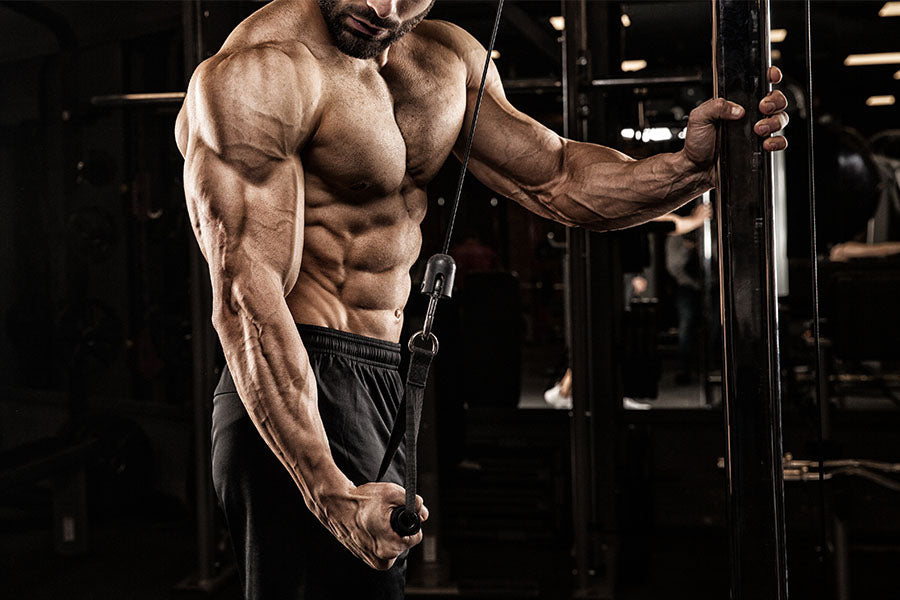If you’re like many, you’re juggling work, family, and a million other commitments. The idea of spending hours at the gym each week to build muscle might seem impossible. But what if I told you that you could achieve significant muscle growth with just two workouts a week? Here’s the deal: It’s about working smart, not just hard.
Is Two Workouts a Week Enough to Build Muscle?
Absolutely! While more frequent training can lead to faster results for some, it’s not a requirement for everyone. The key to building muscle with limited time lies in optimizing those workouts for maximum impact. Let’s break it down: muscle growth, or hypertrophy, is stimulated by stressing the muscle fibers. This stress, coupled with adequate rest and nutrition, triggers a repair process that makes the muscle bigger and stronger. You just need to provide the right stimulus.
Think of it like this: you wouldn’t water your plants ten times a day, would you? They need time to absorb the moisture and grow. Similarly, your muscles need time to recover and rebuild after a challenging workout. Overdoing it can lead to burnout, injury, and stalled progress.

The Science Behind Minimalist Muscle Building
Research supports the idea that less can be more. A study published in the Journal of Strength and Conditioning Research found that training each muscle group twice a week resulted in similar muscle growth compared to training three times a week, especially in untrained individuals. The key is the intensity and volume of those workouts.
Here’s the deal: you’re not just going through the motions. You are pushing yourself, focusing on compound exercises (more on that later) and progressively increasing the weight or reps as you get stronger.
Crafting Your Two-Day Muscle Building Workout Plan
Alright, let’s get practical. Here’s a sample workout plan you can adapt to your fitness level and goals. This routine focuses on hitting all major muscle groups with compound exercises.
Workout A:
- Squats: 3 sets of 6-8 reps. Squats are king. They work your quads, glutes, hamstrings, and core. Focus on proper form.
- Bench Press: 3 sets of 6-8 reps. A classic for chest, shoulders, and triceps.
- Bent-Over Rows: 3 sets of 6-8 reps. Hits your back, biceps, and rear deltoids.
- Overhead Press: 3 sets of 6-8 reps. Works your shoulders, triceps, and core.
- Deadlifts: 1 set of 5 reps. Deadlifts are a full-body powerhouse. Do these last, and focus on perfect form. Remember safety first!
Workout B:
- Front Squats: 3 sets of 6-8 reps. A variation to target the quads more.
- Incline Dumbbell Press: 3 sets of 8-10 reps. This helps target the upper chest.
- Pull-Ups (or Lat Pulldowns): 3 sets to failure (or 8-12 reps). Works your back and biceps.
- Dumbbell Shoulder Press: 3 sets of 8-10 reps. Another shoulder variation.
- Romanian Deadlifts: 3 sets of 10-12 reps. Focuses on hamstrings and glutes.
Here’s a deal: Alternate between Workout A and Workout B, with at least one full rest day between workouts. For example:
- Monday: Workout A
- Tuesday: Rest
- Wednesday: Rest
- Thursday: Workout B
- Friday: Rest
- Saturday: Rest
- Sunday: Rest
This allows sufficient recovery time for muscle growth.
The Importance of Progressive Overload

This is where the magic happens. Progressive overload means gradually increasing the stress on your muscles over time to promote growth and strength gains. There are several ways to apply progressive overload. The most common method is increasing the weight. If you can easily perform the prescribed number of repetitions, try adding a little more weight the next time you train.
If adding weight isn’t an option, increasing the number of reps is another effective strategy. Try to squeeze out an extra rep or two beyond your usual count. You can also increase the total volume of your workout by adding an extra set. More sets mean more work for your muscles, which encourages adaptation.
Nutrition: Fueling Your Muscle Growth
You can’t build a house without bricks, and you can’t build muscle without proper nutrition. Here are some key considerations:
- Protein: Aim for at least 0.8 grams of protein per pound of body weight per day. Good sources include meat, poultry, fish, eggs, dairy, beans, and lentils.
- Calories: To build muscle, you need to be in a slight calorie surplus (eating more calories than you burn). Aim for 250-500 calories above your maintenance level.
- Carbohydrates: Carbs provide energy for your workouts and help with muscle recovery. Choose complex carbs like whole grains, fruits, and vegetables.
- Healthy Fats: Fats are important for hormone production and overall health. Include sources like avocados, nuts, seeds, and olive oil.
- Hydration: Drink plenty of water throughout the day.
Recovery: Letting Your Muscles Rebuild
Rest and recovery are just as important as your workouts. Here are a few tips:
- Sleep: Aim for 7-9 hours of quality sleep per night. This is when your body repairs and rebuilds muscle tissue.
- Active Recovery: Light activities like walking or stretching can improve blood flow and reduce muscle soreness.
- Manage Stress: Chronic stress can hinder muscle growth. Find healthy ways to manage stress, such as meditation, yoga, or spending time in nature.
Remember, building muscle is a marathon, not a sprint. Be patient, consistent, and focus on making small, sustainable changes over time. With the right approach, you can achieve your muscle-building goals with just two workouts a week.
What if I’m a complete beginner?
If you’re new to lifting weights, start with lighter weights and focus on learning proper form. Consider working with a trainer for a few sessions to get personalized guidance.
What if I miss a workout?
Don’t sweat it. Just get back on track with your next scheduled workout. Consistency is key, but missing one workout won’t derail your progress.
Can I do cardio on my rest days?
Yes, light cardio like walking, jogging, or cycling can be beneficial on rest days. Avoid high-intensity cardio, which can interfere with muscle recovery.
How long before I see results?
It varies from person to person, but you should start to see noticeable results within 8-12 weeks of consistent training and proper nutrition.
Is it really possible to build muscle like this?
While two workouts a week may not be optimal for everyone, it is a viable option for those with limited time. It’s all about maximizing the effectiveness of those workouts and prioritizing nutrition and recovery.







